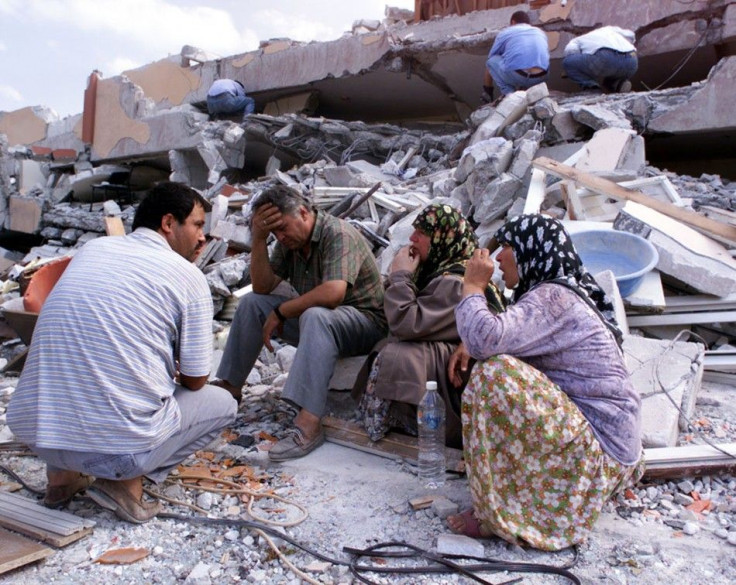Turkey Earthquake 2011: Worst Natural Disaster Since 1999 Quake

The earthquake that struck southeastern Turkey over the weekend was the country’s worst natural calamity since August 1999, when a 7.6-magnitude hit Izmit, in western Turkey, and eventually killed as many as 17,000 people.
The quake was the deadliest in Turkey in sixty years.
The tremor struck in the middle of the night, meaning many victims were asleep in bed with no chance to flee.
Within two hours of the initial tremor, ten more aftershocks hammered the region.
Worse, the buildings in Izmit, a heavily-populated industrialized city, were not adequately constructed to withstand earthquakes – as a result, many people died from falling debris, while entire neighborhoods collapsed and vanished.
A report in National Geographic indicated that “although many of the structures were believed to be earthquake resistant, shoddy construction and inappropriate materials turned them into death traps. Adding to the damage, the fault runs directly through heavily populated areas. Many buildings were destroyed because they straddled the fault and were torn apart.”
The quake was so powerful it destroyed buildings in Istanbul, 50 miles away, and even caused the highway between Istanbul and Ankara to sway, causing car crashes.
The quake also caused a fire at a local oil refinery which held more than 700,000 tons of stored oil – it took several days to get the inferno under control.
Ultimately, the disaster also wounded 44,000 people and created 500,000 homeless.
Some unofficial estimates suggest that the death toll was actually as high as 45,000.
The World Bank estimated that the quake caused up to $6.5 billion in direct property losses.
Known as the ”Kocaeli” earthquake, that disaster occurred on the North Anatolian fault line, one of the world’s longest horizon motion faults. As such, Turkey has historically been plagued by earthquakes, mostly minor.
The USGS stated that: “This [Turkish] fault is very similar to the San Andreas fault in California. Turkey has had a long history of large earthquakes that often occur in progressive adjacent earthquakes.”
© Copyright IBTimes 2024. All rights reserved.





















